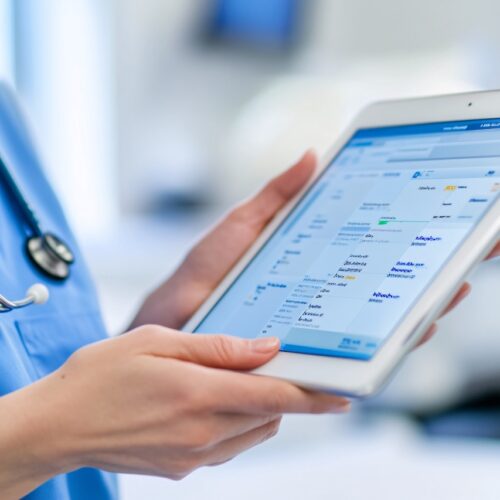Businesses can only be successful if their brand is where the customers are, and if it offers what they need it to offer. Today, the place where you can find customers is not just in your surroundings. It is more about GPS these days – it’s the Internet and the incredible reach it offers.
Still, to reach your audience, you need the right digital marketing strategies.
Just last year, Forbes reported that businesses will spend $1.3 trillion on digital marketing by the end of the year. The unexpected pandemic impacted such predictions and numbers, but now that we’re finally seeing the end of it, we can expect this to happen – and the numbers to go even higher.
Due to the increased use of the Internet for just about everything from purchases to work during the pandemic, we can only expect these numbers to grow. For a business these days, a good digital marketing strategy is vital to success.

Ways to Improve Your Digital Marketing Strategy
Knowing all this, it’s about time that you start working on your new strategies for digital marketing. To start on the right path, below you’ll find 7 great tips that work today.
1. Be informed of laws and regulations – always!
The worst thing you can do for your business right now is to pile up penalties and get yourself in legal trouble. Selling and advertising things online is a serious business, and data privacy is becoming a more complex matter every day. To protect consumers, countries, and states change their regulations and laws regularly. That being said, before you take any steps to promote or sell your products and services online, you need to make sure that you comply with the current regulations.
So, roll up your sleeves and do some research. Take some time to learn about GDPR, the General Data Protection Regulation – the legislation that prompted so many changes in the online industries. Even if you’re not in the European Union, just selling to people located there means that you need to comply with some of the regulations.
2. Work on your social media presence
The past couple of months brought businesses an entirely new challenge – limited face-to-face communication. People stopped shopping in stores, had to hold their distance, and didn’t have the opportunity to see things live before they made the purchase.
It made them warier, but it also made them search for solutions – how to buy the things they needed.
This made online sales more frequent than ever. The world experienced a rather dramatic rise in e-commerce, especially during the movement restrictions. According to the UNCTAD report of May in 2020, total retail sales already increased from 16% to 19%.
As time passed, this became a habit, a preference for many – not just a necessity. Even now when stores are open in most parts of the world, people decide to make their purchases online. It’s convenient, simple, and requires little effort.
For you, this gives plenty of opportunities to make leads and sales online, especially on platforms like social media where people ‘hang out’ most of the time.
Where you’ll post your content, what type of content you’ll post, and even when – will be defined by who your target audience is. It also depends on the type of products or services you’re offering. Luckily, there are many platforms available, giving you tons of chances to become noticed.

Optimizing your social media presence is paramount to harness the potential of online sales and reach your target audience. Utilize various social media resources available to craft engaging content, strategically timing your posts to capture your audience’s attention and drive traffic to your online storefronts. Understanding your audience’s preferences and behaviors will guide you in selecting the most appropriate platforms and content types, ensuring your brand stands out in the crowded digital landscape.
For example, you can use visual platforms like Instagram and Pinterest, to present your products to the audience. You can use the content on platforms like Twitter to make your unique offerings sharable. Videos are extremely popular these days, and you can even go live on Facebook and Instagram.
Thanks to modern tools and programs, you can easily twist and turn your creations to use them on different platforms as they require. For example, you can turn your Mp3 files to text with HappyScribe, transcribe your text from your videos to fit your blog from your live Facebook posts, etc.
3. Connect with customers via email
Email marketing remains one of the best ways to connect with your customers – and your leads. Some see this as an outdated tool seeing how it’s been used for decades. However, the numbers remain impressive to this day – Hubspot reported that 60% of survey participants believe that marketing emails influenced their purchasing behaviors.
Why is this?
Emails make it personal. They help you build a connection, share important data in real-time, and are opened by most recipients as long as you share the right message. Most people these days use email for all sorts of things including work, keeping up with friends, and getting notifications and updates from preferred brands.

There are many ways to utilize email marketing to promote your brand, including:
- Promote new products or services
- Educate customers and leads
- Build loyalty
- Request testimonials and increase your reputation
- Generate higher web traffic
- Wake up ‘dormant customers’, etc.
4. Create engaging visuals
Every successful marketer will tell you that one huge part of their strategy is the visual content. It’s simply not enough to send a couple of emails and write tons of content on your website to make your brand recognizable. Good digital marketing goes hand-in-hand with quality visual content.
If you want to promote your brand and its services online, there’s no escaping content. Everywhere you go on the Web, there’s text, photos, graphics, videos, and more.
Quality images are essential if you want to capture people’s attention – and turn them into customers. Most people these days won’t even consider what you’re offering unless they can visualize it – and why would they? With high-quality imaging, 3D renderings, and live feeds, why would anyone buy something without making sure it’s a good fit?
And it is not just the photos that matter when you’re working on your digital marketing strategies – it’s content like videos, too. Today, videos are more successful than ever. Statistics show that 96% of online shoppers will watch a video about a product or service if one is provided.
Yet, despite the huge number of consumers who want to see video content when they buy things, about a third of companies invest in it right now. This is a great plus for you – it puts you ahead of the competition and gives you an edge, as long as you’re ready to produce this type of visual content and are ready to make it engaging.

Still, to reach your audience, you need the right digital marketing strategies.
5. Automate digital marketing for your brand
Posting across different social media platforms, creating fresh content for your site, communicating with customers, sending emails, selling items, and keeping track of everything going on at your company is hard – and time-consuming. Even if you’re a very capable person and spend all of your time working on it all, this will get harder and harder as you progress in the digital marketing world.
That’s where automation comes – to help you organize and handle all tasks in a timely manner, avoid unnecessary expenses, and eliminate the occurrence of errors.
Marketing automation can do a lot for you in terms of scheduling content, sending reminders, and organizing your schedule. You can use it to spread content across different platforms, schedule your email campaigns, and get notifications when something important happens.Marketing automation aligns marketing and sales teams by streamlining communication, enhancing efficiency, and guiding leads seamlessly through the sales funnel. Through lead scoring, automated workflows, and behavior tracking, it prioritizes and personalizes interactions.
Closed-loop reporting integrates marketing automation with CRM, providing a unified view of the customer journey. Real-time alerts, content personalization, and detailed analytics further enhance collaboration. Check here to learn more about marketing automation.
6. Make some investments in advertising
Out of all forms of advertising, digital advertisements have the widest reach. There are plenty of ways to advertise your brand and products across the web – many of which come at a much cheaper price compared to traditional methods.
Advertising on social media has proven to be highly effective over the years, and it costs very little. As long as you set the campaign to reach the right target audience, have engaging content and quality visuals to show, you can find more shoppers than you ever could with traditional methods.
7. Keep tracking KPIs and analyzing your progress
Never, ever stop analyzing your progress. Analytics are important for any stage, even if your business has already reached the point you had planned for it. KPIs help you reach your goals, and analytics data will allow you to remain at the top – or get there.
Research should not be performed solely for the creation of a business plan. To learn where you did badly and where you did well, what works on the market and what doesn’t, you need accurate data in real-time.
One crucial KPI is website traffic, as increased visits indicate successful outreach and engagement. Conversion rates determine the percentage of website visitors who take desired action, which include making a purchase or filling out a form, are equally important.
Return on investment (ROI) assesses the profitability of campaigns, ensuring that marketing efforts generate positive returns. Social media engagement gauges brand visibility and audience interaction, including likes, shares, and comments.
Additionally, monitoring the cost per acquisition (CPA) provides insights into the efficiency of your budget allocation. Email marketing metrics usually include open rates and click-through rates. They help evaluate the impact of email campaigns.
Finally, customer lifetime value (CLV) reflects the long-term value of acquiring and retaining customers. Businesses can carefully analyze these KPIs to refine their digital marketing strategies for sustained success. So, what are the KPIs you set for your business?
Final thoughts
Digital marketing can change your business and with it – your life. It’s a work-in-progress that will require plenty of effort on your side. But, if you do it well and are smart about it, this can help you raise your business from the ground up, keep it high and trending, and beat the competition.
FAQ
What is digital marketing?
Digital or online marketing, is an online promotion of a brand or a service, combining various strategies to connect with potential and existing customers.
What are some examples of digital marketing?
Any marketing asset or effort falls under the category of digital marketing. This includes pay-per-click advertising, email marketing, social media marketing, etc.







